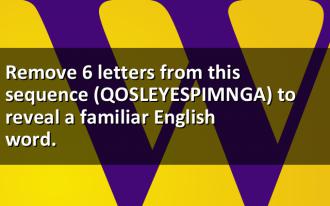Remove 6 letters from this seq...
Remove 6 letters from this sequence (QOSLEYESPIMNGA) to reveal a familiar English word.Correct answers: 53
The first user who solved this task is Manguexa Wagle.
#brainteasers #wordpuzzles

Not a smartass
I'm not a smartass … I am a skilled, trained professional in pointing out the obvious and i speak fluent sarcasm.

